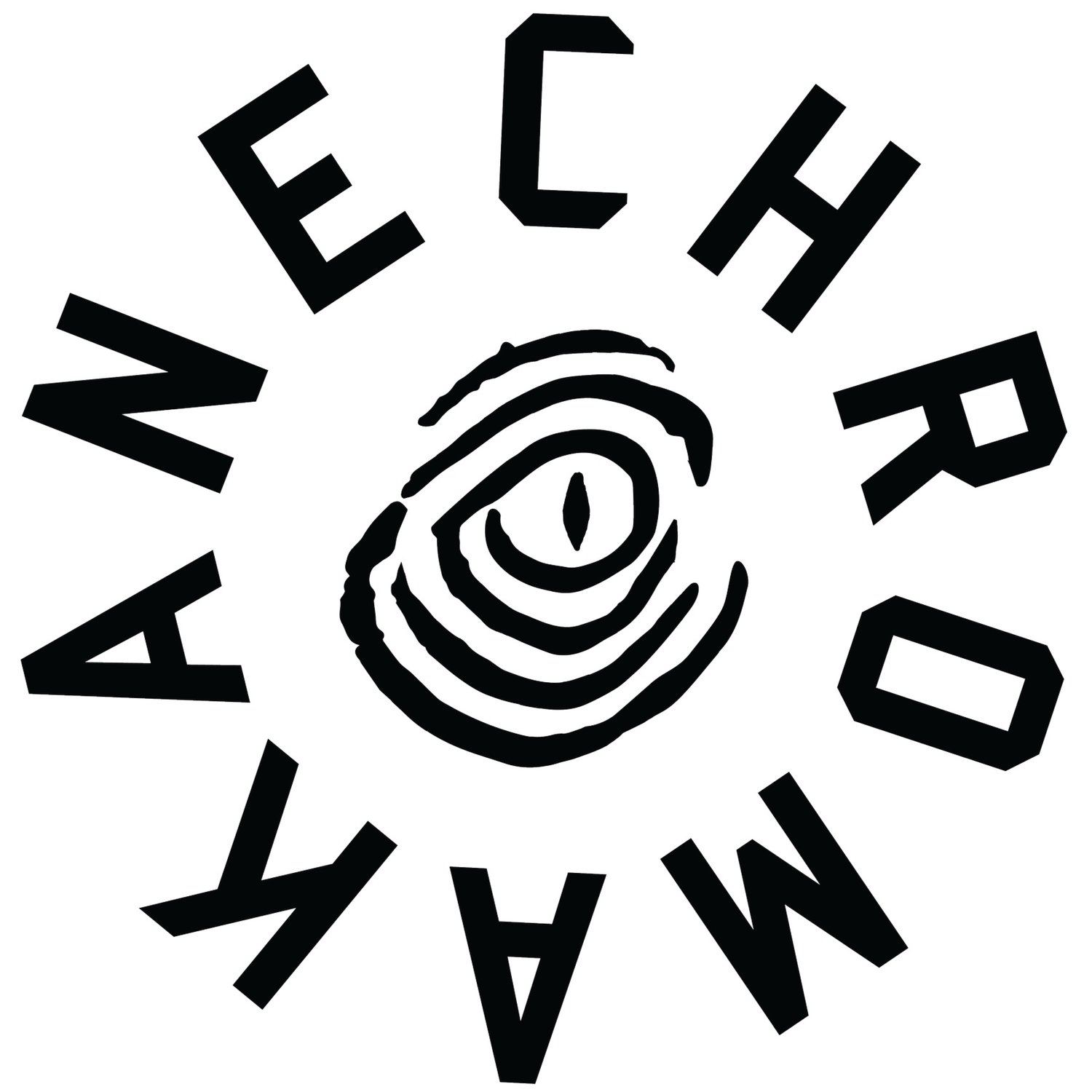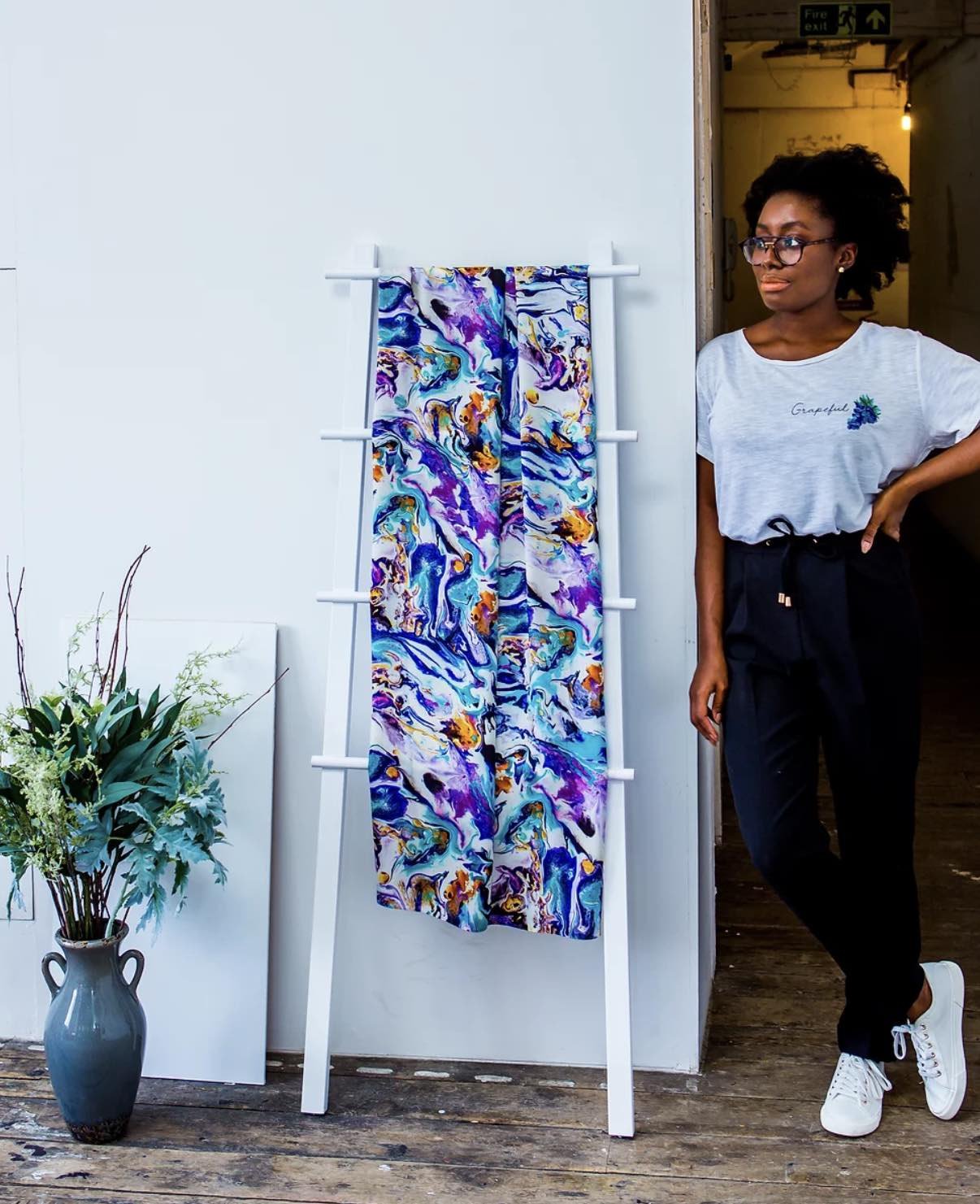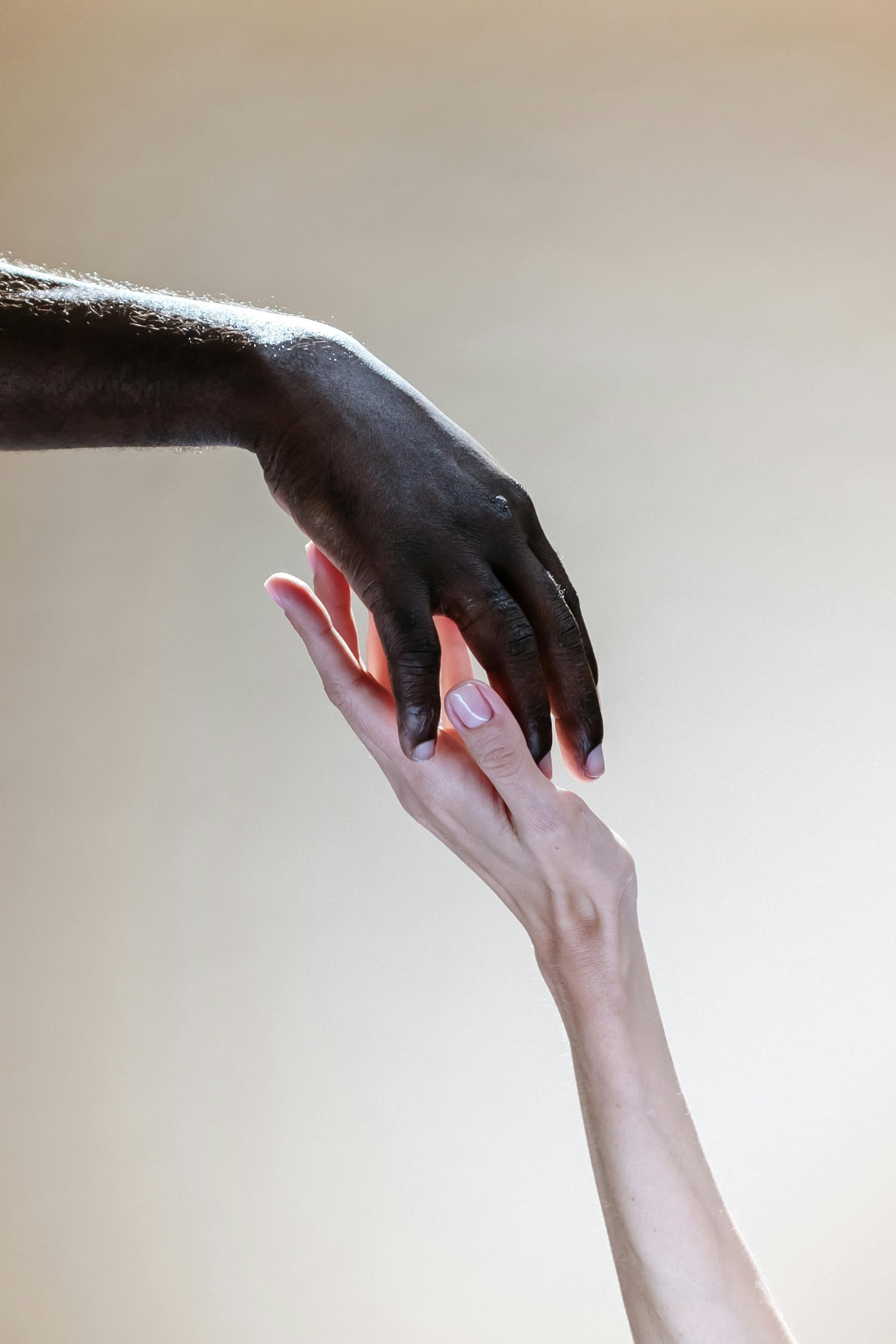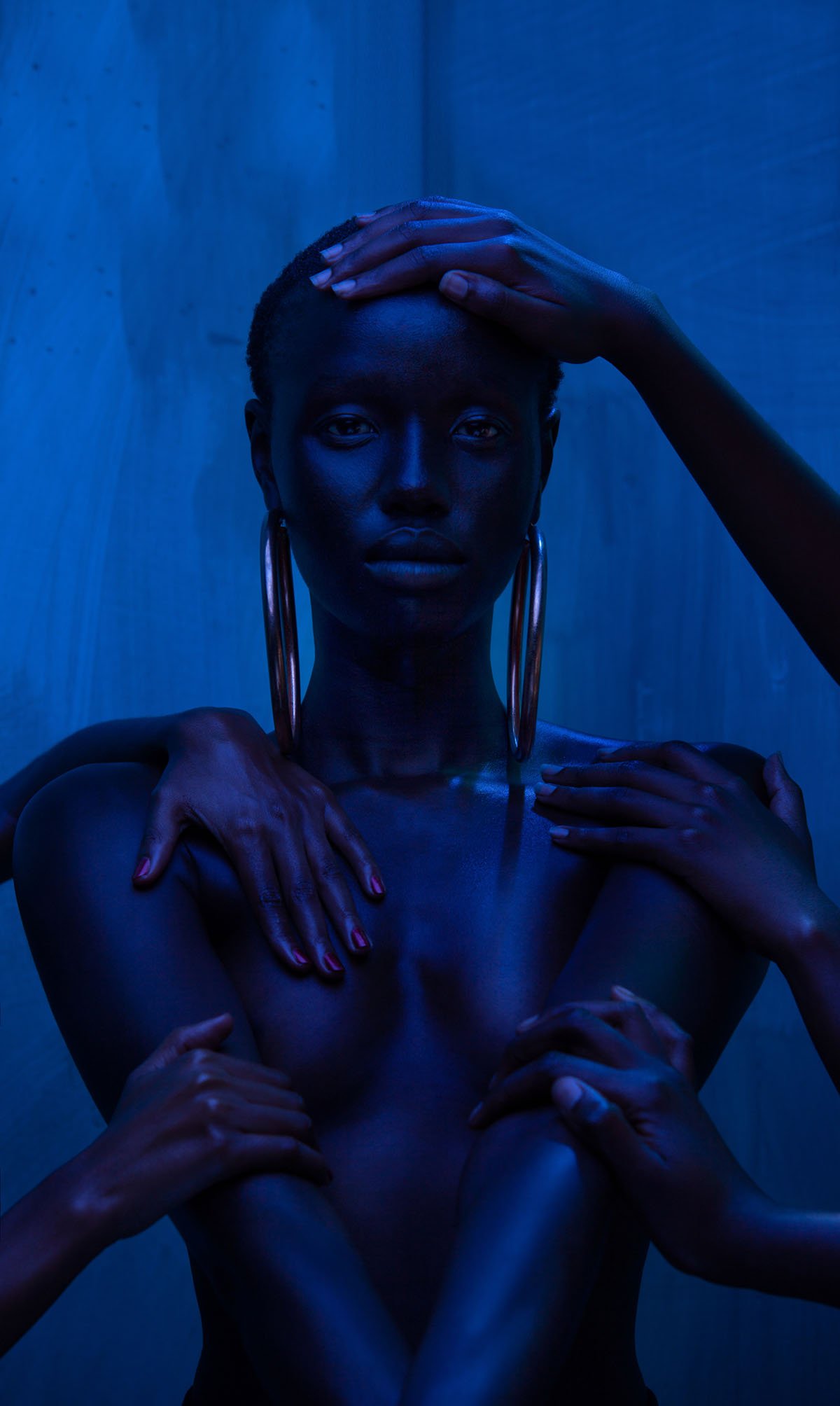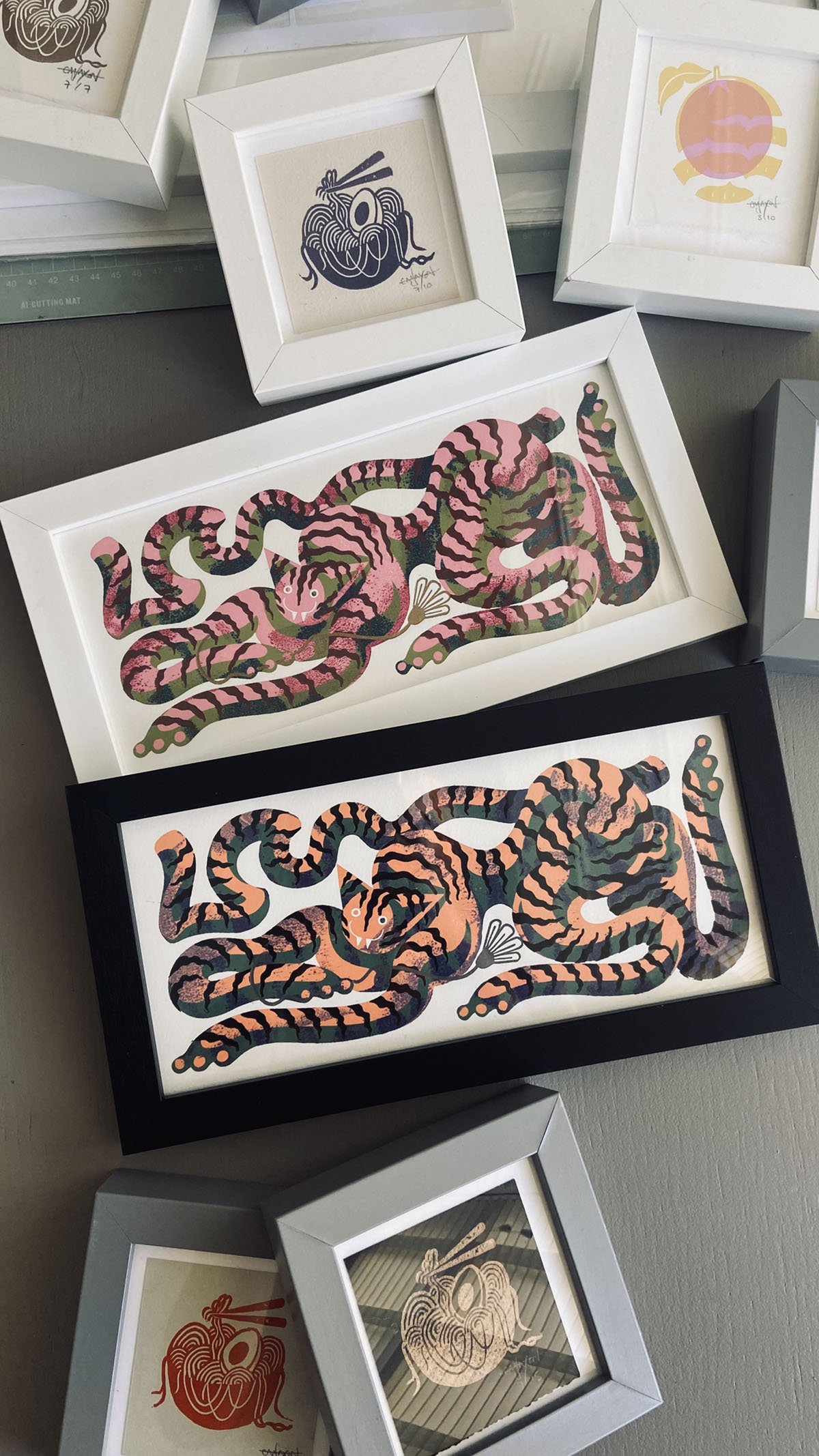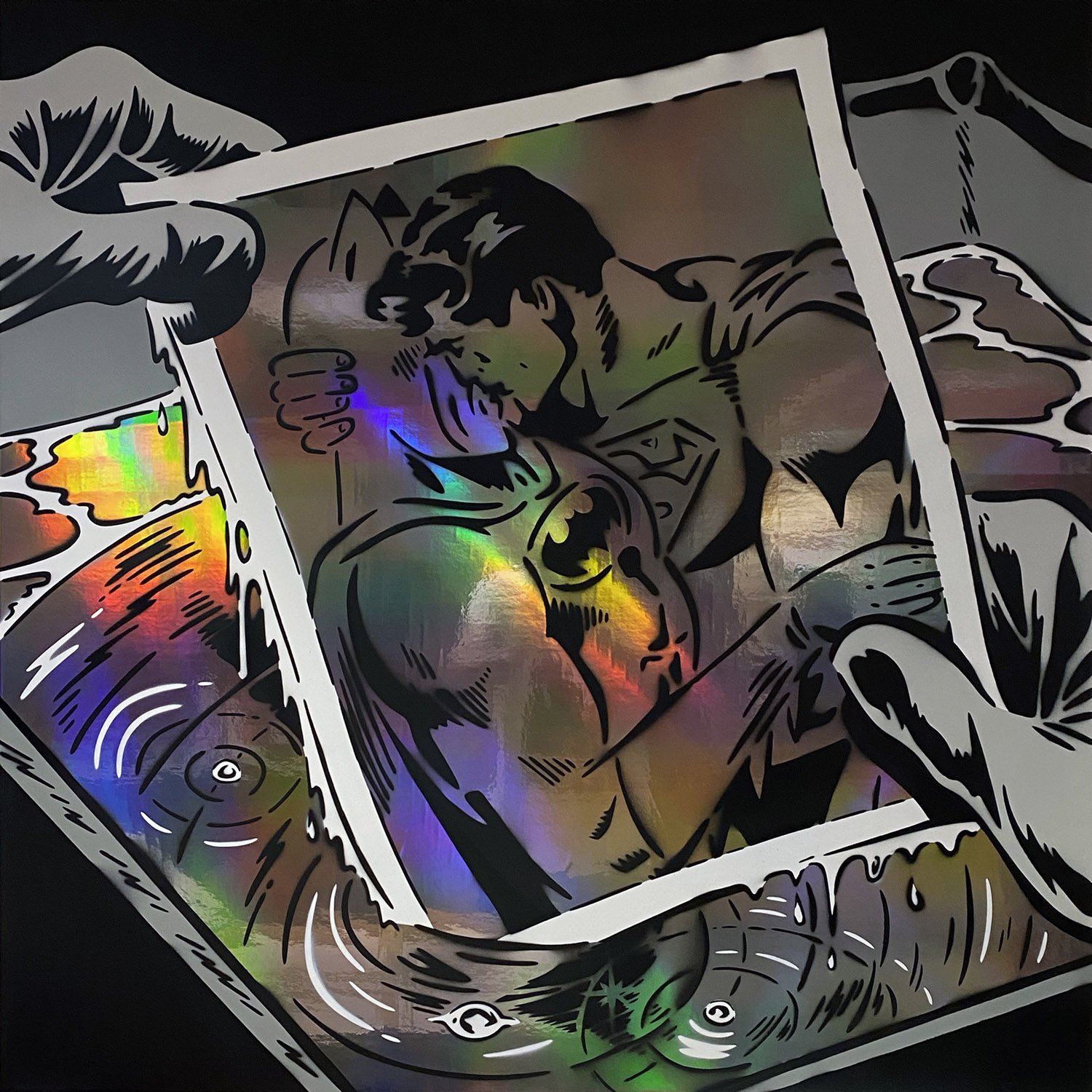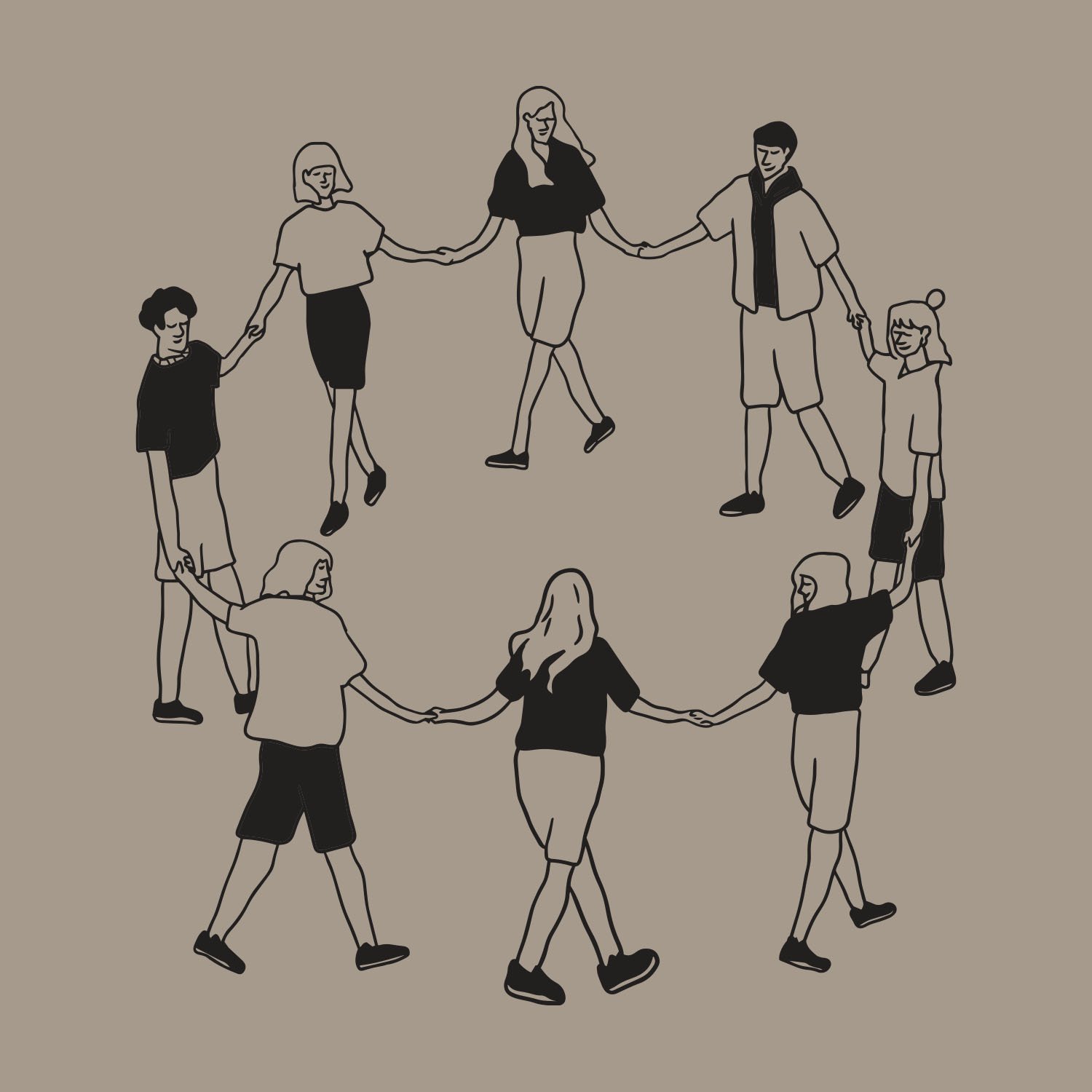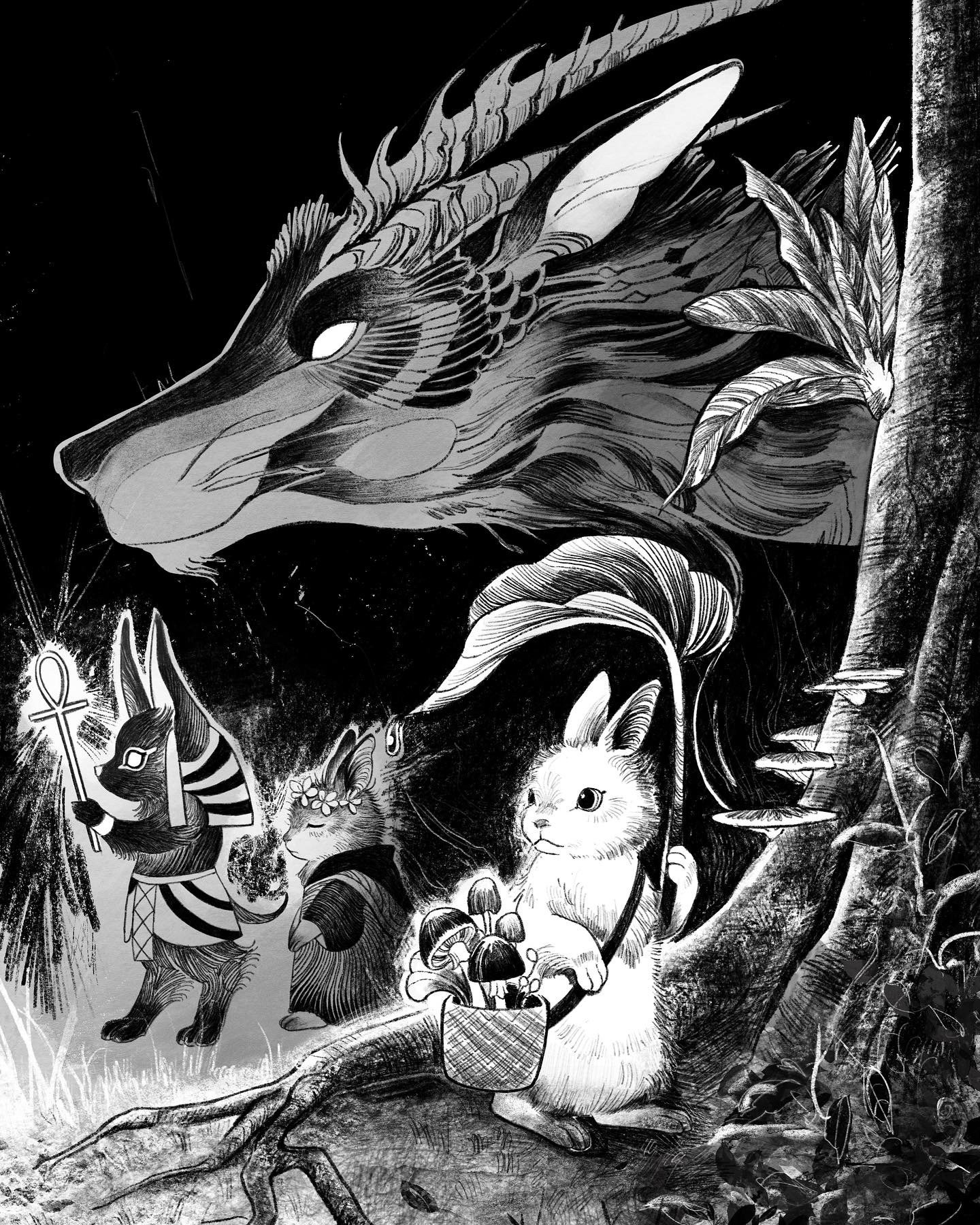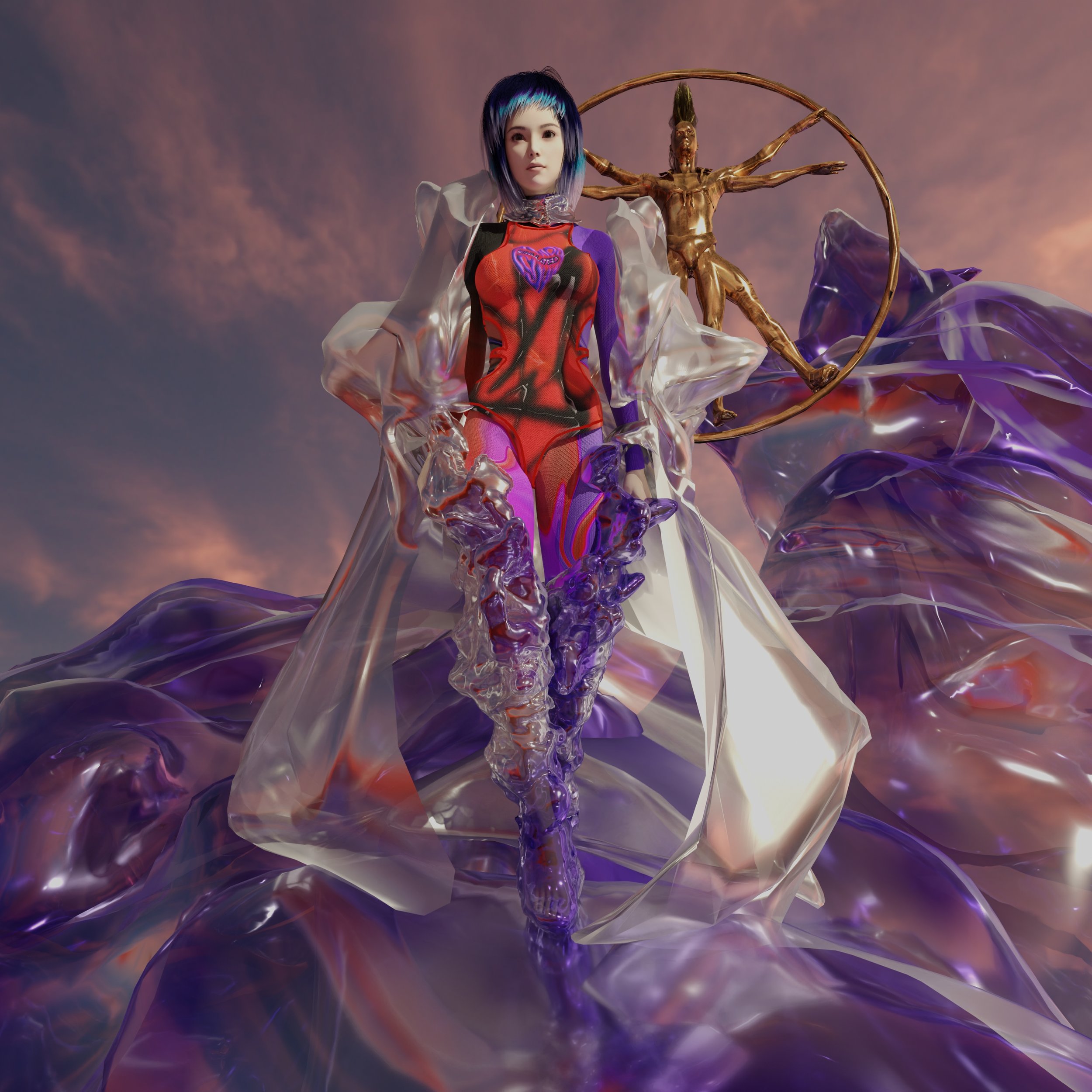The transformative power of textiles and fabric: In interview with Yvette Kissi
About
Yvette Kissi is a London-based textile designer and visual artist who creates stunning abstract compositions, influenced by her equally rich and vibrant cultural heritage. She shares what she believes makes textile and fabric such a unique medium, as well as her ambitions as an experimental creative.
Share this article
Hi Yvette, please tell us more about yourself, and your journey into textiles and visual art.
Hi Jessie! I am a London based, British Ghanaian textile designer and visual artist. My creative journey into textiles feels like it has been quite a natural progression. As I reflect on my practice so far, I’ve realised that although I studied printed textiles at university, there are much earlier influences that I believe led me onto this path.
Growing up, I was surrounded by the beautiful Ghanaian outfits my mother wore featuring exquisitely crafted fabrics from Ghana. I then saw my grandmother and aunties wearing similar outfits of woven kente cloth and woodblock print and batik fabrics during family visits to Ghana. They were often paired with the most stunning and intricately patterned traditional beads as accessories.
The transition to include painting and visual art in my work came much later. Painting initially came as I discovered a new medium – a type of paint that would flow and move on the page, diffusing and interacting in different ways to produce unique abstract art pieces. Much of the painting I do now grew from this initial exploration with this medium and a series of miniature abstract paintings I created daily in 2020 (A Painting a Day). These small quiet moments allowed me to lean into the process further amidst the noise at the time. A painting for me is never just a painting, it’s a chance to slow down, observe, be still and allow the paint to move across the page as it wants to.
How would you say textile design allows you to express yourself creatively, in ways that no other medium can?
I don’t think I will ever get enough of the transformative power of textiles and fabric. It is a medium and surface that has so many different possibilities and techniques that can be applied to it. As such a versatile medium it continues to challenge and allow me to bridge the gap between the two main facets of my practice, painting and textile design.
When I paint, 90% of the time I capture the process through film and photography meaning it exists in its various stages. For me, textiles are an extension of painting as an art form, giving each painting another form in which to exist.
“As I reflect on my practice so far, I’ve realised that although I studied printed textiles at university, there are much earlier influences that I believe led me onto this path.”
Your pieces are altogether beautifully vibrant, elegant and complex. Can you share more about your creative process, and how you find a balance for each composition visually?
Thank you so much!
I would describe my process as being very intuitive throughout the entire design process. People often ask “when/how do you know when a painting is finished?” and truthfully, I just get to a stage when I feel the need to stop. I think that’s important.
When I approach a blank surface to paint I don’t ever start with a composition or colour palette in mind. There may be a period of time when I am drawn to the same few starting colours (perhaps in varying combinations) but they’re never planned in advance and they never end up the same. Once I have a series of paintings that I can envision on fabric, I use the photographs taken during the painting process along with scans of the piece, to create a digital design which is then ready to be printed onto fabric.
Your designs are versatile, as they can be worn or displayed as wall art for interior spaces. How important is this fluidity of the ‘final form’ to you?
One of my favourite quotes is by Ghanaian artist El Anatsui and it sums it up perfectly:
“[I am interested in textile because it is] Always in motion. Anytime you touch something, there is bound to be a change. The idea of a sheet that you can shape and reshape. It can be on the floor, it can be up on the ceiling, it can be up on the wall, all that fluidity is behind the concept.” The Nomadic Aesthetic
It’s the idea that there isn’t a fixed state for fabric. There is always movement going on which allows for an infinite amount of ways that the image, pattern or design is viewed, constantly changing and evolving, sections obscured in momentary folds and pleats as it is worn or even as it hangs on a wall, moved by a breeze.
How does your British Ghanaian heritage and identity influence your creativity?
I believe that a lot of my curiosity around colour is rooted in the richness of my culture and heritage.
I have a fond memory of my grandmother, who on a much earlier family visit to Ghana when we were children, dressed my sister and I in Kente cloth and beads from her own collection. Much later as an adult I was lucky enough to witness how artisans create this beautiful, revered fabric in Bonwire, Ghana. I was captivated by the wealth of storytelling within Kente. Every colour and motif has a significance and meaning that is woven into the cloth and it was such a privilege to discover this when I saw weavers at work. I even had the opportunity to try it out myself and quickly realised that they make it look a lot easier than it is!
My mum often mentioned her auntie, a third generation traditional beads trader who had a wealth of knowledge about the making and meaning of the beads trade, knowledge passed down through generations, with her grandmother & mother making a living making and selling these beads. During my last visit to Ghana I was able to have my own hands on experience of making beads using the same traditional bead making processes that have been used for years. I was surprised to discover that the way I paint, not knowing exactly how the final piece will turn out, has many parallels with the traditional workmanship of Ghanaian beads and other Ghanaian crafts. I honestly fell in love with their process and have a renewed appreciation for the beads and traditional clothes in my family. With my intrigue piqued, I have been inspired to investigate more of the craft legacies in my own family history.
“I believe that a lot of my curiosity around colour is rooted in the richness of my culture and heritage.”
What does creative collaboration mean to you?
The first thing that may come to mind for a lot of people when creative collaboration is mentioned, is a collaboration between creative practitioners which I absolutely agree with but I also see the creative process that happens between an artist and their materials as a creative collaboration. I paint as collaboration between myself, the paints, and the surface I apply them to.
How valuable is experimentation to your work, and how do you see your creative practice growing over the coming years?
Extremely valuable. It is through experimentation that my practice has become what it is today and continues to evolve. Through experimentation, I am able to let go of preconceived notions of the work I “should” be creating and just create. I’d like my work to evolve to include much larger scale original pieces. I also want to continue to develop, establish and communicate my distinctive signature style throughout my creative practice.
If you had one word of wisdom to share with the world, what would it be?
Wow, what a question…
Don’t work when you’re tired because when you do, you’ll end up having to do twice the work later. I’ve had to learn this the hard way! ✺
Find Yvette online
www.yvettekissi.com
@yvettekissi
